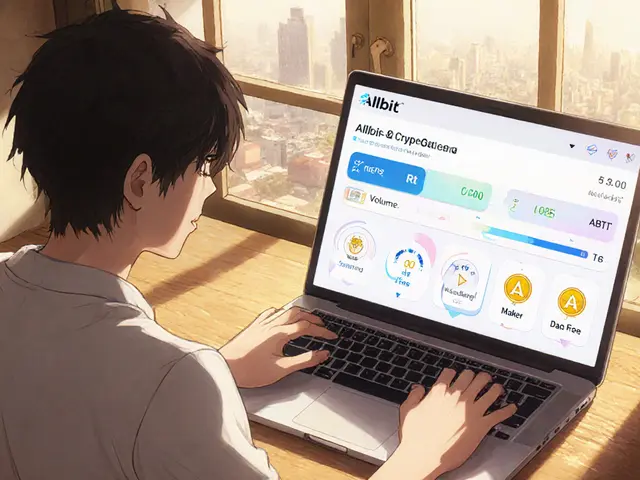Websea Copy Trade: Everything You Need to Know
When diving into Websea copy trade, a method that mirrors the trades of successful crypto traders in real time. Also known as social copy trading, it blends the speed of algorithmic bots with the insight of seasoned market movers. Copy trading itself depends on social trading platforms that host leaderboards, performance stats, and one‑click mirror functions. A typical crypto exchange supplies the order‑routing engine, while users rely on risk management tools—stop‑loss, position sizing, and diversification—to keep drawdowns in check. In short, Websea copy trade lets a beginner tap into expert strategies without writing code, but success still hinges on choosing the right leader, platform, and safeguards.
Key Concepts, Tools, and Real‑World Considerations
First, you need a platform that supports copy‑trade APIs or built‑in mirroring. Services like Binance, Bybit, and newer niche sites often publish leaderboards, showing win rates, average hold times, and risk scores. The platform’s fee structure matters too—some charge a flat spread, others add a performance fee on the copied trader’s profits. Second, understand the underlying asset classes. Most copied trades involve spot pairs (BTC/USDT, ETH/USDT) but many traders also mirror futures or leveraged positions, which multiply both gains and losses. Third, transparency is crucial: look for clear trade logs, verified performance data, and community reviews. Our collection below includes deep‑dive exchange reviews (BVOX, OccamX, btcShark, Zoomex, GJ), so you can match copy‑trade needs with a trustworthy venue. When it comes to risk, the mantra is “don’t put all eggs in one basket.” Use the platform’s built‑in risk limits to cap exposure per copied trader, and consider spreading copies across several high‑ranked leaders. Volatility spikes—common in DeFi tokens and meme coins—can wipe out a mirrored position in seconds, so set stop‑loss thresholds based on your risk appetite. Many copy‑trade services let you allocate a percentage of your capital to each leader; start low (5‑10%) and adjust as you see consistent results. Our posts on exchange security (e.g., BVOX security, btcShark red flags) give you a sense of which venues protect funds best, which is essential when granting third‑party access to your account. Regulatory landscapes also shape copy‑trade decisions. Countries like Iran and Nepal impose strict bans or heavy monitoring, forcing traders to use VPNs or P2P channels—options that can break the seamless flow required for real‑time copying. The article on VPN use in Iran highlights the risk of account freezes if regulators detect suspicious activity. Meanwhile, emerging policies in small nations (Switzerland, UAE, Singapore) create crypto‑friendly environments where copy‑trade platforms can operate with clear KYC/AML rules. Our guide on global KYC & AML requirements for 2025 helps you stay compliant while using these services. Technology-wise, many platforms now integrate AI‑driven signal generators that suggest which leaders to follow based on recent performance, correlation, and market sentiment. This is where the line blurs between pure copy‑trade and automated bot trading. The “Shockwaves (NEUROS) crypto coin” piece shows how AI gaming tokens are shaping new incentive models, hinting at future copy‑trade bots that reward followers with token airdrops. If you’re curious about the future, keep an eye on DeFi projects that combine staking, liquidity mining, and copy‑trade incentives. Finally, the psychological side can’t be ignored. Watching a top trader’s success can create a herd mentality, leading you to copy without due diligence. Treat each copied strategy as a hypothesis: monitor results, adjust parameters, and be ready to pull the plug if the data turns sour. Our “Underground Crypto Trading in Nepal” article illustrates how traders under pressure resort to risky shortcuts—avoid that mindset by staying disciplined and using the risk tools mentioned earlier. Below you’ll find a curated set of articles that cover everything from exchange fee structures to regulatory updates, mining restrictions, NFT airdrops, and AI‑driven tokens. Together they give you the full picture you need to start—or improve—your Websea copy trade journey with confidence.
9
Websea Crypto Exchange Review 2025: Features, Security, and User Experience
A thorough 2025 review of Websea crypto exchange covering its features, security, fees, liquidity, and who should trade on it.
Latest Posts
Popular Posts
-
 What is LUXO (LUXO) crypto coin? The truth about the luxury authentication token
What is LUXO (LUXO) crypto coin? The truth about the luxury authentication token
-
 What is Privix New (PRIVIX) Crypto Coin? Facts, Price, and Risks in 2025
What is Privix New (PRIVIX) Crypto Coin? Facts, Price, and Risks in 2025
-
 What Is Collateralization in DeFi? A Clear Guide to How It Works and Why It Matters
What Is Collateralization in DeFi? A Clear Guide to How It Works and Why It Matters
-
 Xena Exchange Crypto Exchange Review: Professional Tools vs. Regulatory Risks
Xena Exchange Crypto Exchange Review: Professional Tools vs. Regulatory Risks
-
 What is Bitgert (BRISE) crypto coin? Full breakdown of the blockchain, tokenomics, and real-world performance
What is Bitgert (BRISE) crypto coin? Full breakdown of the blockchain, tokenomics, and real-world performance
Tags
- crypto exchange
- cryptocurrency
- crypto exchange review
- meme cryptocurrency
- blockchain
- cryptocurrency compliance
- Binance Smart Chain
- CoinMarketCap airdrop
- underground crypto Nepal
- crypto airdrop guide
- crypto staking
- Bitcoin mining Iran
- airdrop
- Ethereum staking
- GENIUS Act
- liquid staking
- cryptocurrency exchange security
- crypto
- crypto airdrop
- crypto regulations



